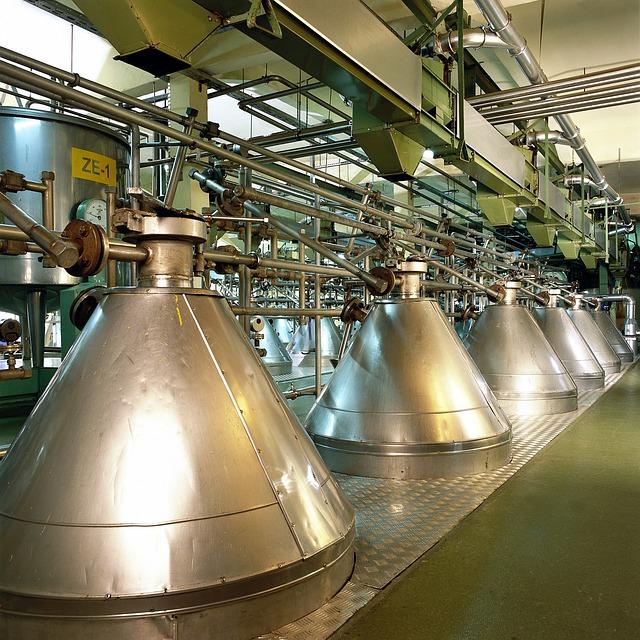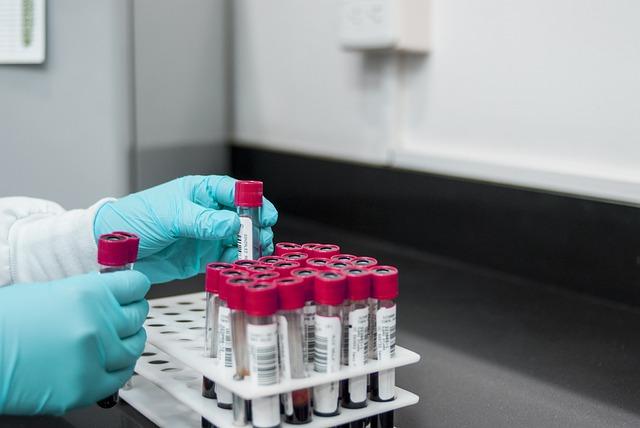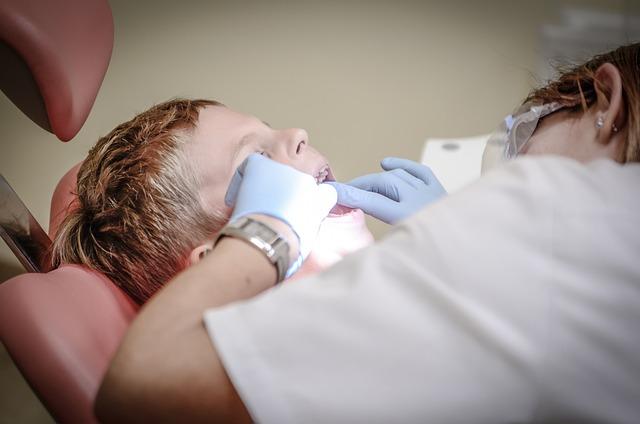Bye Bye, Tooth: Understanding Tooth Removal Procedures by Name
Say goodbye to tooth troubles as we dive into the fascinating world of tooth removal procedures. Whether it’s a pesky wisdom tooth causing you grief or a decayed molar that needs extraction, understanding the various techniques and names associated with this common dental practice is crucial. In this informative article, we will explore the ins and outs of tooth removal procedures, equipping you with the knowledge to confidently discuss and comprehend the process. So, fasten your seatbelts as we embark on a journey that will enlighten you on the procedures that bid adieu to teeth, leaving you with a clearer understanding and a brighter smile.
1. The Basics of Tooth Removal: A Comprehensive Guide to Common Dental Procedures
The Basics of Tooth Removal
In this comprehensive guide, we will provide you with all the essential information you need to know about common dental procedures involving tooth removal. Whether you are preparing for a dental extraction or simply curious about the process, we’ve got you covered.
During tooth removal, a dentist or oral surgeon carefully extracts a tooth from its socket in the bone. This procedure is typically performed under local anesthesia to ensure minimal discomfort. Here are the key points to keep in mind:
- Reasons for Tooth Removal: Tooth extraction may be necessary due to various reasons, including severe decay, periodontal disease, overcrowding, or a damaged tooth that cannot be restored.
- The Procedure: Prior to the extraction, your dentist will assess the tooth and surrounding tissues using X-rays. During the procedure, a dental instrument called an elevator is used to loosen the tooth, followed by forceps to remove it gently. Stitches may be required in some cases.
- Recovery and Aftercare: After the extraction, it is important to follow your dentist’s instructions for proper healing. This may include avoiding strenuous activities, eating soft foods, and practicing good oral hygiene.
Remember, tooth removal is a common dental procedure that can help alleviate pain and prevent further oral health complications. If you have any concerns or questions, consult with your dentist, who will provide personalized guidance based on your specific situation.

2. Extraction Explained: Understanding the Different Types of Tooth Removal Techniques
Understanding the different types of tooth removal techniques is crucial when it comes to dental extractions. Here, we will explore the various methods used by dentists to extract teeth, each catering to specific dental conditions and patient needs.
1. Simple Extraction: This technique is employed when the tooth can be easily seen and accessed in the mouth. The dentist uses a tool called an elevator to loosen the tooth, followed by forceps to remove it.
2. Surgical Extraction: More complex than a simple extraction, this method is used for teeth that cannot be easily accessed. It involves making an incision in the gum tissue to expose the tooth and bone, followed by removing the tooth in sections if necessary.
3. Wisdom Tooth Extraction: Wisdom teeth, also known as third molars, often require extraction due to various reasons such as impaction or overcrowding. Depending on their position and condition, wisdom teeth may be removed with either a simple or surgical extraction technique.
4. Orthodontic Extraction: Sometimes, teeth need to be extracted to make room for orthodontic treatment, such as braces. These extractions are carefully planned to ensure the teeth are removed strategically to achieve the desired outcome.
By understanding the different types of tooth removal techniques, patients can have a clearer picture of what to expect during the extraction process. It is essential to consult with a qualified dentist who will determine the most appropriate method based on the individual’s dental health and specific circumstances.

3. Surgical Extractions Demystified: What You Should Know About Complex Tooth Removals
In some cases, a regular tooth extraction may not be sufficient to remove a problematic tooth. This is where surgical extractions come into play. These complex tooth removals are typically performed by oral surgeons or qualified dentists who have extensive experience in these procedures.
Here are some important things you should know about surgical extractions:
- Reasons for Surgical Extractions: There are several reasons why a surgical extraction may be necessary. Some common scenarios include impacted teeth (such as wisdom teeth), severely damaged or broken teeth, teeth with complex root structures, or teeth that are difficult to access.
- The Procedure: During a surgical extraction, the dentist or oral surgeon will make a small incision in the gum tissue to access the tooth. In some cases, the tooth may need to be divided into smaller pieces for easier removal. The area may also need to be numbed with local anesthesia or, in some cases, conscious sedation may be used to ensure your comfort throughout the procedure.
- Recovery and Aftercare: After a surgical extraction, it is important to follow the aftercare instructions provided by your dentist or oral surgeon. This may include taking prescribed pain medication, applying ice packs to reduce swelling, eating soft foods, and avoiding strenuous activities. It is also crucial to keep the extraction site clean to minimize the risk of infection.
Remember, surgical extractions are performed to address specific dental issues and ensure the overall health of your mouth. If you have concerns about a tooth that may require a surgical extraction, consult with your dentist or oral surgeon who can provide you with the best course of action.

4. Unveiling the Mystery: Decoding the Terminology of Tooth Removal Procedures
When it comes to tooth removal procedures, the terminology used can sometimes be confusing. To help you decipher the mystery, we have compiled a list of common terms and their meanings:
- Extraction: This is the general term used to describe the removal of a tooth from its socket in the jawbone. It can be a simple extraction, where the tooth is easily accessible, or a surgical extraction, which is more complex and may require an incision in the gum.
- Impacted tooth: An impacted tooth is one that fails to fully emerge through the gum, often due to lack of space or improper alignment. It may need to be surgically removed to prevent complications.
- Wisdom teeth: Also known as third molars, wisdom teeth are the last teeth to erupt and often cause problems due to their late appearance. They may need to be extracted to alleviate pain, prevent crowding, or avoid potential oral health issues.
- Root canal: While not technically a tooth removal procedure, a root canal involves removing the infected or damaged pulp from the tooth’s root. It is done to save the tooth from extraction and relieve pain.
By familiarizing yourself with these terms, you will be better equipped to understand discussions with your dentist and make informed decisions about your oral health. Remember, always consult with a dental professional for personalized advice regarding tooth removal procedures.
5. Wisdom Teeth Woes: Navigating the Process of Wisdom Tooth Extraction
Wisdom teeth extraction can be a daunting process, but with the right knowledge and guidance, navigating through it can become much easier. Here are some key points to keep in mind:
- Consultation: The first step is to schedule a consultation with an oral surgeon. They will evaluate your wisdom teeth and determine if extraction is necessary. This is also an opportunity for you to ask any questions or express concerns you may have.
- Preparation: Your surgeon will provide you with detailed instructions on how to prepare for the procedure. This may include fasting prior to surgery, arranging transportation, and taking any prescribed medications. Following these instructions is crucial for a smooth extraction process.
- The Procedure: Wisdom tooth extraction is typically performed under local anesthesia, but general anesthesia may be an option for more complex cases. The surgeon will make a small incision in the gum to access the tooth and may need to remove bone or cut the tooth into smaller pieces for easier extraction. Stitches may be necessary to close the incision.
- Recovery: After the procedure, it is common to experience swelling, discomfort, and some bleeding. Following your surgeon’s post-operative instructions, such as taking prescribed pain medications and applying ice packs, will help manage these symptoms. Soft foods and gentle oral hygiene practices are recommended during the healing process.
- Possible Complications: Although rare, complications such as infection, dry socket, or nerve damage can occur. By carefully following your surgeon’s instructions and attending any necessary follow-up appointments, you can minimize the risk of complications and ensure proper healing.
Remember, each individual’s experience with wisdom tooth extraction may vary, so it’s important to consult with a qualified oral surgeon who can provide personalized advice and guidance throughout the process.
6. Beyond Extraction: Exploring Alternative Tooth Removal Options for Dental Health
In addition to traditional tooth extraction, there are alternative options available for maintaining dental health. These alternatives not only aim to preserve the natural teeth but also offer a range of benefits. Here are some alternative tooth removal options worth exploring:
- Root Canal Therapy: This procedure involves removing the infected pulp from the tooth while preserving the outer structure. By eliminating the need for extraction, root canal therapy can save the natural tooth and prevent the need for a dental implant or bridge.
- Tooth Reshaping: Also known as odontoplasty, this technique involves removing small amounts of enamel to reshape the tooth. It is ideal for correcting minor imperfections, such as chips or uneven edges, without the need for extraction.
- Laser Dentistry: Utilizing advanced laser technology, dentists can perform certain procedures that would otherwise require extraction. Laser dentistry is minimally invasive and can be used for treating gum disease, removing oral lesions, or reshaping gum tissue.
These alternative tooth removal options offer patients a chance to preserve their natural teeth, maintain oral health, and avoid the potential complications associated with extraction. Consulting with a qualified dentist is essential to determine the most suitable option based on individual circumstances.
7. The Road to Recovery: Essential Tips for a Smooth Healing Process after Tooth Removal
After having a tooth removed, it is important to follow certain tips to ensure a smooth healing process. Here are some essential tips that will help you recover faster and more comfortably:
- Take prescribed medications: Your dentist may prescribe painkillers or antibiotics to prevent infection. Make sure to take them as instructed.
- Apply ice: To minimize swelling, apply an ice pack or a cold compress to the affected area for 10-15 minutes at a time.
- Avoid strenuous activities: For the first few days after the tooth removal, it is recommended to avoid any activities that could increase blood flow to the area, such as intense exercise.
- Follow a soft diet: Stick to soft foods that require minimal chewing, like soups, yogurt, mashed potatoes, and smoothies. Avoid hard, crunchy, or spicy foods that may irritate the extraction site.
- Keep the area clean: Gently rinse your mouth with warm saltwater several times a day, starting the day after the extraction. This helps keep the area clean and reduces the risk of infection.
- Avoid smoking and drinking through a straw: Smoking and using straws can dislodge blood clots and slow down the healing process. It is best to avoid them for a few days.
- Attend follow-up appointments: Make sure to schedule and attend any follow-up appointments with your dentist. They will assess your healing progress and address any concerns you might have.
By following these essential tips, you can promote a smooth healing process after tooth removal and ensure a successful recovery.
8. Tooth Removal for Orthodontic Purposes: How Extractions Can Aid in Achieving a Perfect Smile
When it comes to achieving a perfect smile through orthodontic treatment, tooth removal can often play a crucial role. While the idea of having teeth extracted may sound daunting, it is important to understand that this procedure is performed with the sole purpose of improving the alignment and overall appearance of your teeth. Here are a few key points to consider:
- Creating Space: In some cases, there may not be enough room in the mouth to accommodate all of the teeth properly. By removing specific teeth, orthodontists can create the necessary space for the remaining teeth to align correctly.
- Correcting Overcrowding: Overcrowded teeth can lead to various dental issues, such as misalignment and difficulty in cleaning. By extracting certain teeth, orthodontic treatment can help alleviate overcrowding, allowing the remaining teeth to shift into their proper positions.
- Addressing Jaw Misalignment: In certain cases, orthodontic treatment may require the correction of jaw misalignment. By strategically removing teeth, orthodontists can help align the jaws properly, improving both the bite and the overall appearance of the smile.
It is important to note that the decision to extract teeth for orthodontic purposes is always made on a case-by-case basis. Your orthodontist will thoroughly evaluate your specific dental situation and recommend the most suitable treatment plan for you. Rest assured, tooth removal is a common and safe procedure that, when performed by experienced professionals, can significantly contribute to achieving the perfect smile you desire.
9. In the Dentist’s Chair: What to Expect during a Tooth Removal Procedure
When it comes to tooth removal procedures, it’s natural to feel a bit nervous or unsure about what to expect. However, understanding the process can help alleviate some of that anxiety. Here is an overview of what typically happens during a tooth removal procedure:
- Anesthesia: Before the procedure begins, your dentist will administer a local anesthetic to numb the area around the tooth being removed. This ensures that you won’t feel any pain during the extraction.
- Tooth Extraction: Once the anesthesia has taken effect, the dentist will carefully loosen the tooth from its socket using specialized tools. In some cases, a tooth may need to be sectioned into smaller pieces for easier removal.
- Gauze and Stitches: After the tooth has been extracted, the dentist will place a piece of gauze over the extraction site to help control bleeding. In certain situations, dissolvable stitches may be used to close the wound.
It’s important to note that every tooth removal procedure may vary depending on individual circumstances. Your dentist will provide specific instructions tailored to your needs, including post-operative care and any necessary pain management. Remember, open communication with your dentist can help address any concerns or questions you may have.
10. A Closer Look at Tooth Removal Complications: Understanding Potential Risks and How to Minimize Them
When it comes to tooth removal, it’s important to be aware of the potential complications that can arise. Understanding these risks can help you take necessary precautions and minimize their occurrence. Here, we will take a closer look at some common complications associated with tooth removal and provide insights on how to minimize them.
Infection: One of the most common complications after tooth removal is infection. This can occur if the surgical area is not kept clean or if proper oral hygiene is not maintained. To minimize the risk of infection, it is crucial to follow your dentist’s post-operative instructions diligently. This may include rinsing your mouth with warm saltwater, avoiding smoking or alcohol, and taking prescribed antibiotics if necessary.
Dry socket: Another potential complication is a condition called dry socket, which occurs when the blood clot that forms after tooth extraction becomes dislodged or dissolves, leaving the underlying bone and nerve exposed. This can be quite painful and delay the healing process. To minimize the risk of dry socket, it is important to avoid vigorous rinsing, drinking through a straw, or smoking in the days following the extraction. Your dentist may also place a medicated dressing over the extraction site to promote healing.
Frequently Asked Questions
Q: What is the purpose of the article ”Bye Bye, Tooth: Understanding Tooth Removal Procedures by Name”?
A: The purpose of this article is to provide a comprehensive understanding of tooth removal procedures, explaining the various names associated with them.
Q: Why is it important to understand tooth removal procedures by name?
A: Understanding tooth removal procedures by name is crucial as it allows patients to have a better grasp of the dental procedures they might undergo. This knowledge can help alleviate anxiety, facilitate informed decision-making, and improve communication with dental professionals.
Q: What are some common tooth removal procedures mentioned in the article?
A: The article covers several common tooth removal procedures, including extractions, wisdom tooth removal, surgical tooth removal, and simple tooth removal.
Q: How does the article define extractions?
A: According to the article, extractions refer to the removal of teeth that are visible and accessible. This procedure is typically performed when a tooth is severely damaged, decayed, or causing overcrowding.
Q: What information does the article provide about wisdom tooth removal?
A: The article explains that wisdom tooth removal is a common dental procedure that involves extracting the third molars located at the back of the mouth. It further highlights that impacted wisdom teeth can lead to various oral health issues, making their removal necessary.
Q: What distinguishes surgical tooth removal from other procedures mentioned?
A: Surgical tooth removal, as stated in the article, is a more complex procedure compared to simple extractions. It involves making an incision in the gums to access the tooth, often necessary when a tooth is impacted or has not fully erupted.
Q: Is the article biased towards promoting tooth removal procedures?
A: No, the article maintains a neutral stance and does not display any bias towards promoting tooth removal procedures. Its aim is solely to provide factual information and enhance readers’ understanding of these procedures.
Q: Does the article discuss alternatives to tooth removal procedures?
A: While the article primarily focuses on explaining tooth removal procedures, it briefly mentions that alternative options, such as root canals or dental crowns, may be considered for certain cases. However, a more detailed discussion of these alternatives is not provided.
Q: Can this article be considered a substitute for professional dental advice?
A: No, this article is not a substitute for professional dental advice. It is intended to provide general information and raise awareness of tooth removal procedures. Individuals with specific dental concerns should consult their dentist for personalized advice.
Q: How does the article conclude?
A: The article concludes by emphasizing the importance of understanding tooth removal procedures by name, as it empowers patients to make informed decisions about their dental health. It encourages readers to seek professional advice and maintain open communication with their dental care providers.
Concluding Remarks
In conclusion, understanding tooth removal procedures by name can alleviate any anxiety or uncertainty surrounding this common dental practice. By familiarizing ourselves with the various types of extractions, such as simple or surgical, we can better comprehend the level of complexity involved in each case. It is crucial to remember that tooth removal is a routine procedure performed by skilled dental professionals, who prioritize patient comfort and safety above all else. By discussing the specific procedure with your dentist, you can gain a clearer understanding of what to expect, including potential complications and aftercare instructions. Remember, maintaining good oral hygiene and regular dental check-ups can often prevent the need for tooth removal altogether. So, fear not, as armed with knowledge, we bid adieu to any worries about tooth removal procedures.





